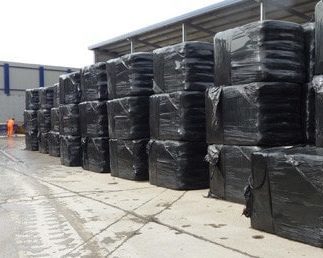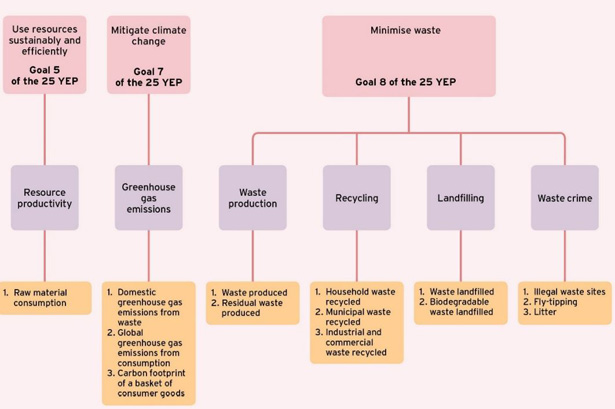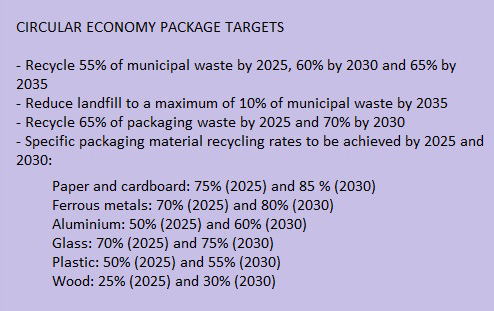The Department for Environment, Food and Rural Affairs has published two policy papers covering its monitoring and evaluation work on the Resources and Waste Strategy for England.
And, in them there is a warning that a “substantial amount of material” is going into residual waste when it should be handled higher up the waste hierarchy.
Titles of the two documents are: Resources and waste strategy: monitoring progress; and Resources and waste strategy: evaluation plan.
Monitoring progress spells out the indicators the department will use to monitor implementation of the strategy. The Evaluation plan states how the department will evaluate the strategy’s effects on waste and use of resources.
Monitoring Progress
The Monitoring progress document explains that monitoring will assess progress not just against the strategy’s aims but also against the government’s 25 Year Environment Plan, the Clean Growth Strategy, the Industrial Strategy and the Litter Strategy.

RDF exports, UK energy from waste plants and landfill are all likely to be recipients of some waste which could be recycled
One area where Defra concedes that work is “challenging” is around ‘avoidable waste from household sources’. In the Resources and Waste Strategy, there was a commitment “to eliminating all avoidable waste by 2050 and all avoidable plastic waste through the lifetime of the strategy (by the end of 2042).”
Now the department says that quantifying this “avoidable” waste is subject to varying interpretations. However, using compositional studies it finds four categories:
1. Readily recyclable with current technologies – items which shouldn’t be in the residual waste stream whatsoever because they are recyclable or compostable at the kerbside or household waste recycling centres (HWRCs);
2.Potentially recyclable with technologies in development – recycling of this material either: a) happens already but not at scale due to collection or technical challenges; or b) could be possible with technological/methodological changes that are already on the market and can be readily envisaged;
3. Potentially substitutable to a material which could be recycled – it is hard to envisage a recycling route for these materials, but they could be substituted for something else which could be recycled;
4. Difficult to recycle or substitute – the material is difficult to avoid becoming residual and no feasible alternative can be envisaged without entailing substantial cost.
Message
Defra says that “the message from this assessment is that a substantial quantity of material appears to be going into the residual waste stream, where it could have at least been recycled or dealt with higher up the waste hierarchy. This is something we will continue to monitor into the future in line with our commitment to reduce avoidable waste.”
The concern over recyclable waste going into residual waste has already been an area of concern and is reflected in the ambition to move from 45% to 55% household recycling and to jump business recycling from around 35% now to 75%.
Measurement
In this first Monitoring progress report, Defra hasn’t fully shown how indicators are related to previous years and this is something it says it will do in the future, such as when the new data tracking systems for waste are developed.
It points to a set of headline indicators (see chart) which should help Defra compare outcomes and impacts against commitments and targets established in the area of resources and waste.
Data
A long list is given of datasets which are being developed. These include ‘Municipal waste recycled’ and the department says it is “currently developing a formal methodology for producing a best estimate of municipal waste recycled”.
The policy paper reiterates Defra’s ambitions which include:
- At least double resource productivity by 2050
- avoidable plastic waste by the end of 2042
- Zero avoidable waste by 2050
- Work towards eliminating food and biodegradable waste to landfill by 2030

And it gives a reminder of targets along with the confirmatory note that the department might even go further in the future. The targets are linked with the European Union’s Circular Economy Packaged and are shown in the table.
Evaluation Plan
The Evaluation plan (EP), which was externally reviewed, looks at how policies implemented under the strategy will be evaluated in the future to assess their impact.
Evaluation, says Defra, builds on data generated during monitoring but goes further by more comprehensively assessing policies against several dimensions in addition to intended outcomes. These may include costs and benefits of a policy, whether any unintended consequences arose and effectiveness of implementation.
The first publication of the EP sets out evaluation principles, quality assurance mechanisms and a range of methods for assessing the attribution of policies to outcomes. In addition, individual chapters detail methodologies for evaluating key areas where change is anticipated as a result of our policies.
Five evaluation projects are listed, in line with much of the content of the Strategy.
Related links
Defra Resources and waste strategy for England: monitoring and evaluation
The post Defra in call ‘to move waste up hierarchy’ appeared first on letsrecycle.com.
Source: letsrecycle.com Waste Managment


